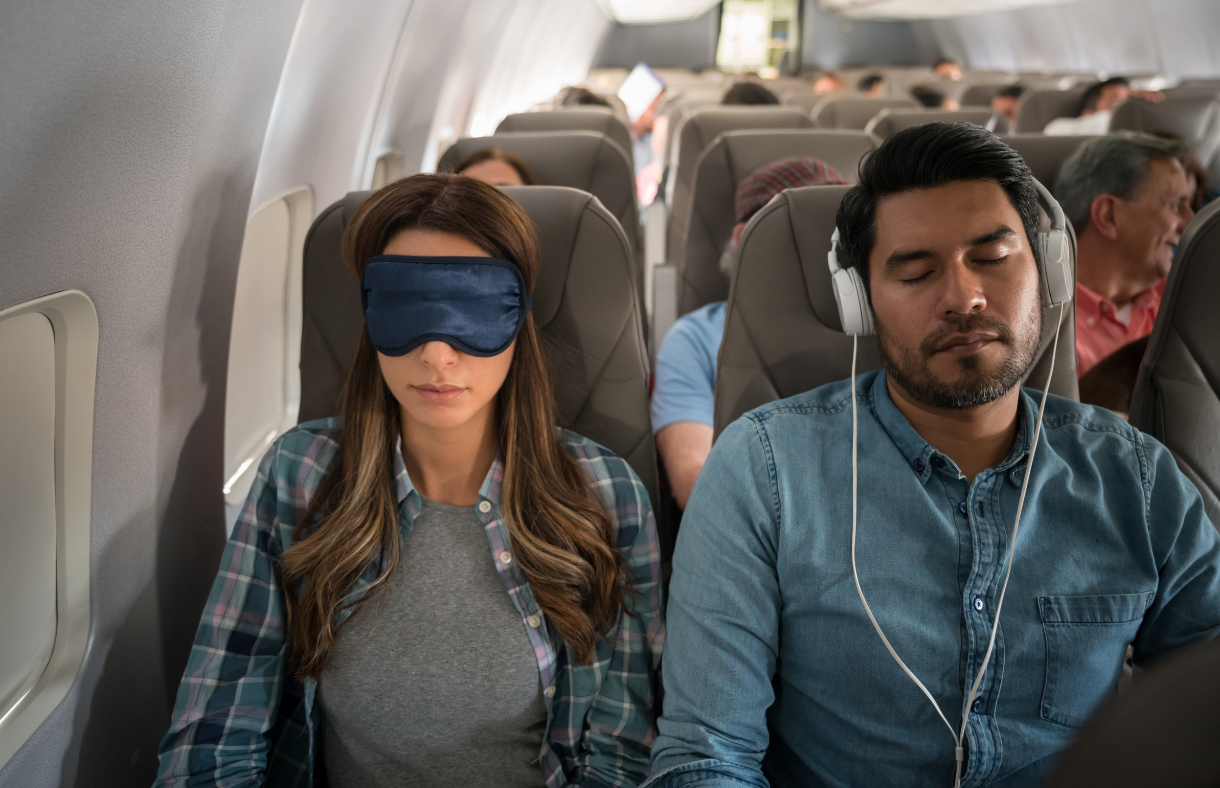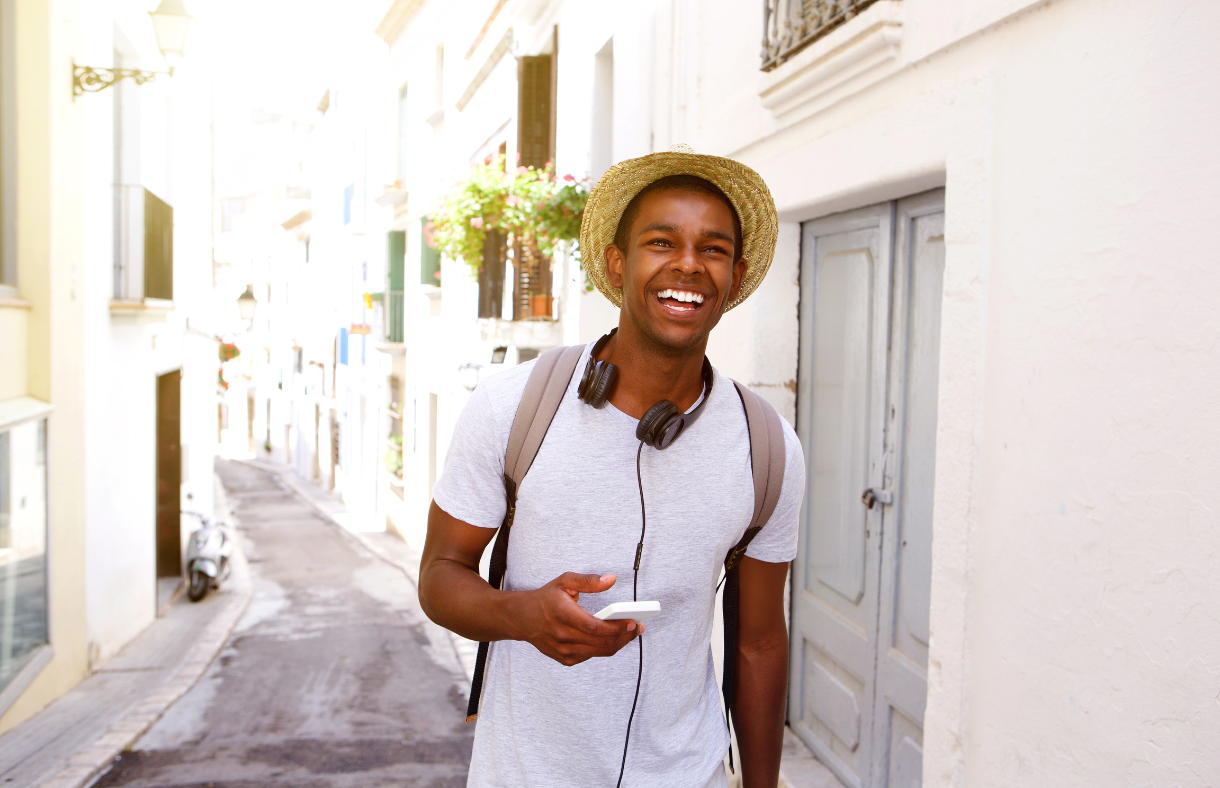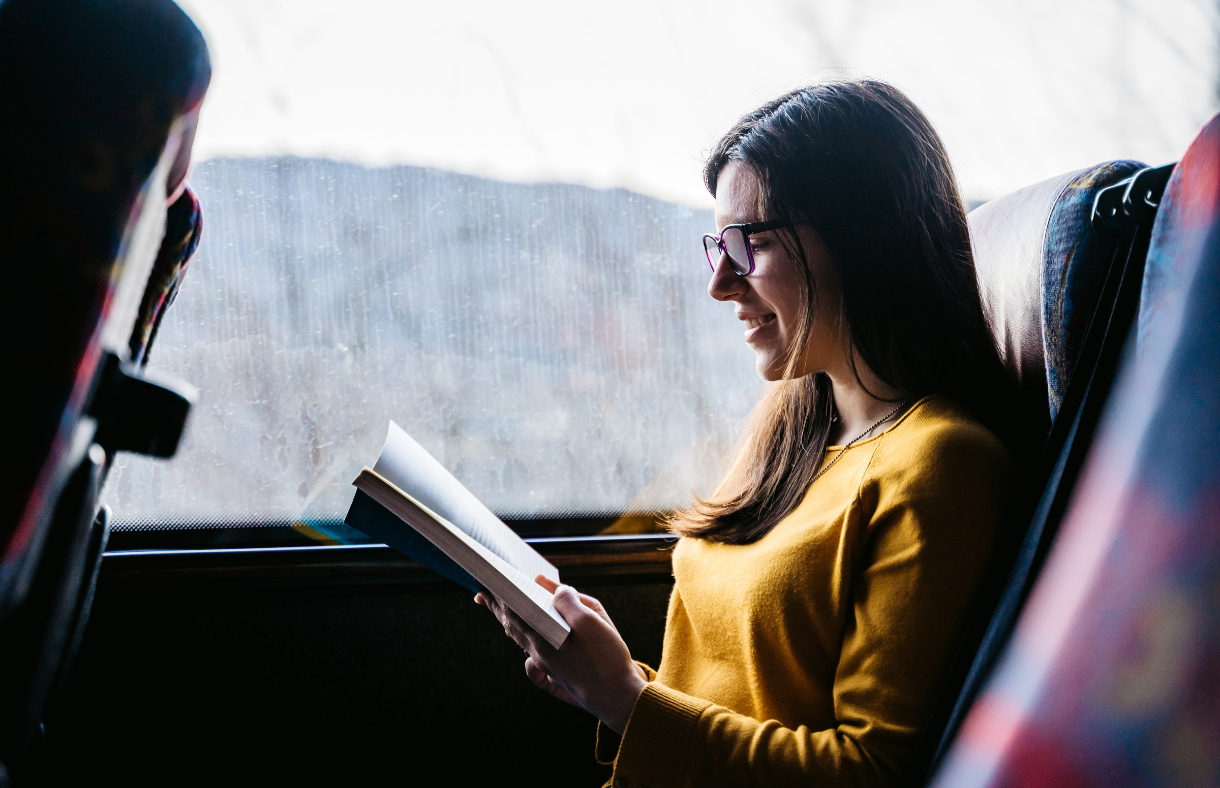As the year turns toward warmer seasons, thoughts turn toward vacation. And after months of COVID-19 travel restrictions, long-distance travel is particularly popular now—notwithstanding the extra work and planning involved.
With disabilities in the picture, planning gets even more complicated. We recently published a post on traveling with mobility impairments. Today, two of our BridgingApps team share tips for vacationing with sensory disorders (hypersensitivities or low sensitivities to outside stimuli).

Cristen Reat, Co-Founder and Program Director:
Our teenage son Vincent has autism and Down syndrome, plus visual and auditory issues. The crowds and constant announcements of air travel are a torturous assault on his sensory system. Plus, he is extremely sensitive to having anything except his regular glasses on his head, which means he refuses to wear noise-cancelling headphones or earplugs.
We have techniques to make things a bit easier. First, we always use a wheelchair or adaptive stroller, where Vincent feels the safest, in an airport. We request to board the plane either first or last, which makes it easier to find a relatively quiet pre-boarding area—often a gate close to our actual boarding gate, but without an imminent flight—and then take the time Vincent needs to get onboard and situated.
We don’t go to restaurants often, but when we do, it’s on a good-weather day so we can sit outside where it’s less crowded. And when necessary, we will ask that blaring music be turned down.
Some apps we like while traveling are:
- Breathe, Think, Do by Sesame Street.
- Calm for reducing stress and aiding relaxation.
- Learning Ally for audiobooks.
- Access Houston Airports by InfiniTeach. This is a wonderful app designed specifically for Houston’s two major airports. It includes social stories, maps, activities, a basic communication board, and a personalized schedule.

Walter Prescher, Digital Navigator:
My wife and I both have sensory issues, which made our recent trip to Europe challenging as well as exciting. Flying with sensory processing disorder (SPD) can be very difficult: even before boarding, you face an airport plethora of sights, sounds, and smells—plus a sense of anxiety from other passengers rushing to clear security and get to their gates.
On the plane, takeoff and landing mean elevated noise from the engines and hydraulic systems, plus the steep pitch of the aircraft as it climbs or comes in. Additionally, many people with SPD have big personal bubbles [personal-space comfort zones], making it overwhelming to sit in standard airplane seats during full flights. (If the roomier seating of business or first class is an option, it may be worth the extra money.)
In Europe, much intercontinental travel is by train—and many train stations are as chaotic as airports. Plus, unless you’re already familiar with a terminal, there’s the added complexity of finding the correct platform in a maze of stairs and tunnels.
Challenges continue once you reach your destination. I have audio-processing issues that make it difficult to distinguish sounds or follow a conversation: it’s like there’s a ten-second delay between someone’s saying something and my hearing it. In Europe, this was complicated by the language barrier, especially with Romance languages (French, Spanish, Italian, Portuguese, Romanian) and their softer pronunciations and dropped letters.
If you are sensitive to flavors or food textures, it’s critical to understand that food you encounter in other regions may be different from what you’re used to at home. For example, the spaghetti we found in a Milan restaurant included octopus tentacles in the sauce recipe. Take a long look at any menu before going into the restaurant (besides online, most walk-up places post their menus outdoors).
It’s worth adding that most tourist destinations have dining options geared toward U.S. tastes. We found pizza (not quite identical to in the U.S., but close enough), hamburgers, and fries readily available.
And, of course, we have favorite SPD-friendly apps for traveling. Mine are:
- iTunes to drown out external sounds and calm myself.
- Welltory and AI Stress Monitor to track my heart rate variability (HRV) and see how my body is handling travel stress.
- Puzzle-game apps such as Water Sort or Sudoku, to distract my mind from overwhelming situations.

For shifting focus from the stimuli around, my wife’s top apps are:
- Audible, especially the history audiobooks.
- Paint by Number Art: Hey Color.
- Idle Lumber Empire–Wood Game, and other Idle series games that engage different aspects of the brain in simple problems and visible progress.
The best thing to remember overall: know yourself and plan time to decompress. On our trip, we intentionally limited the number of places we went, especially visually stimulating museums. We also scheduled quiet breaks each day at our hotel or a nearby park. Always know what you need—and give it to yourself!

